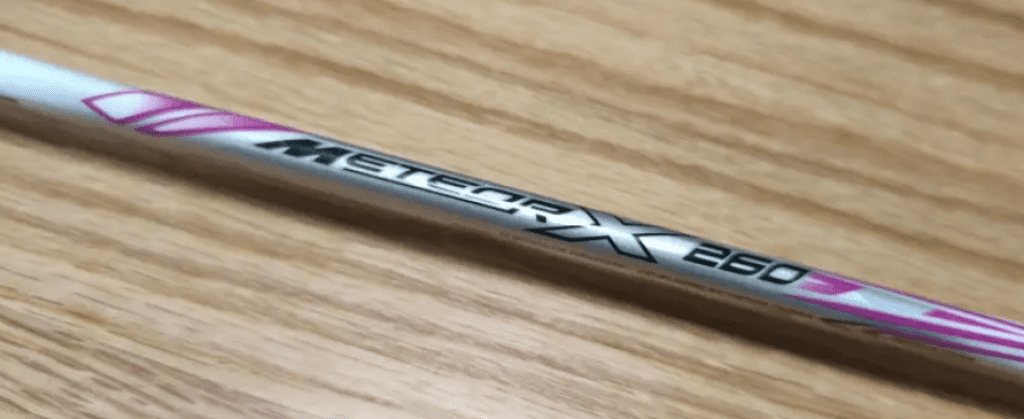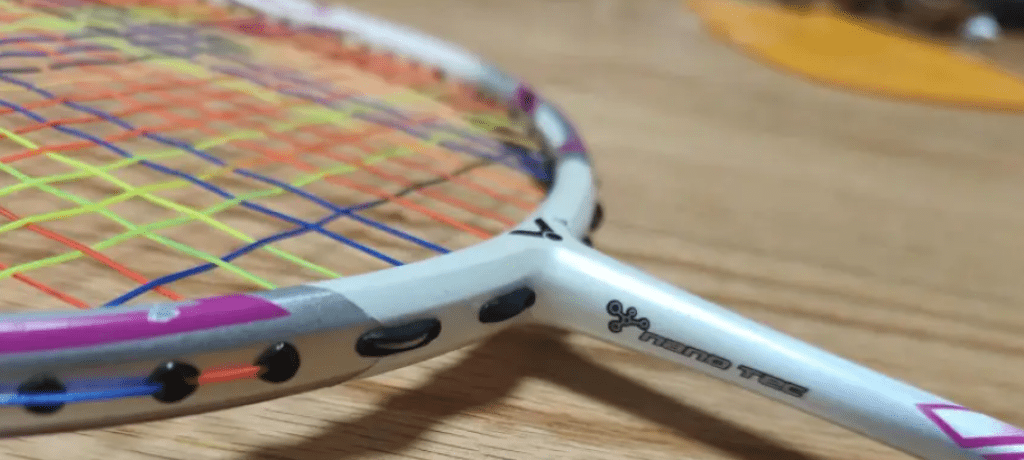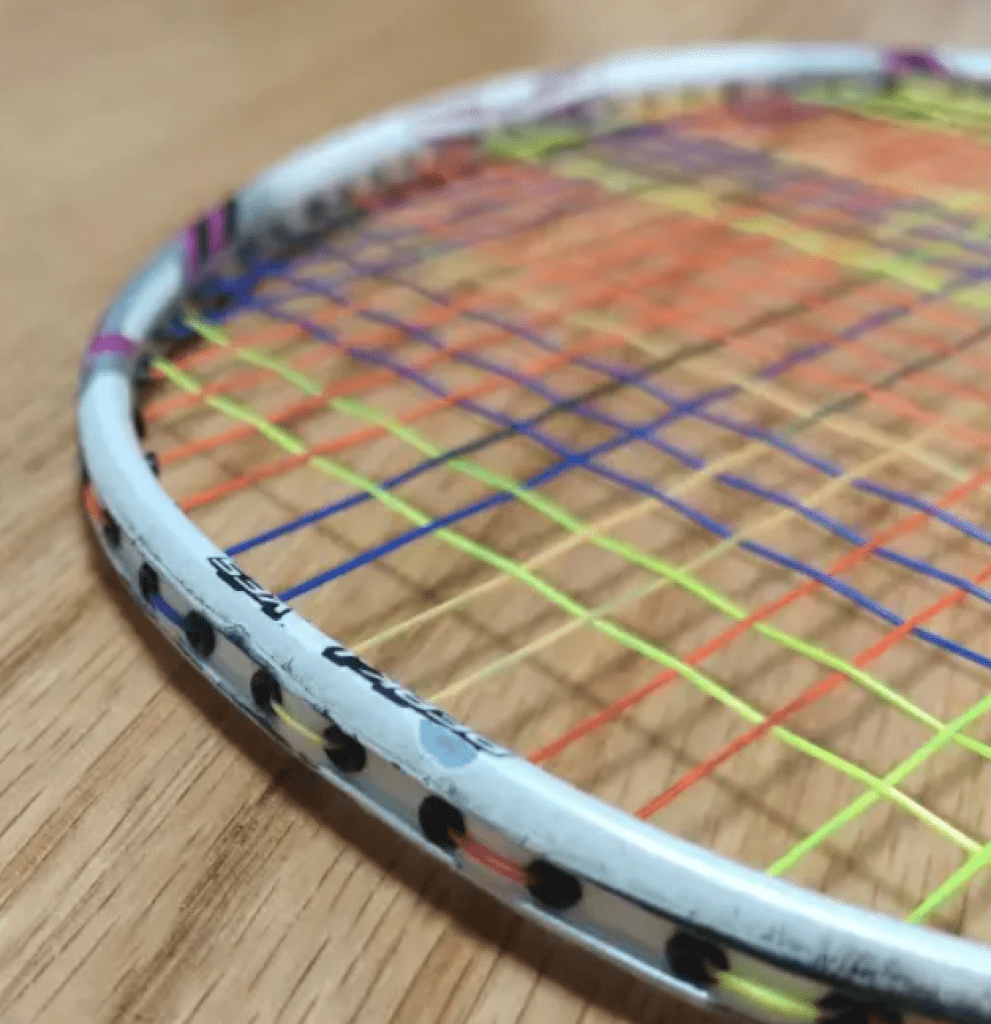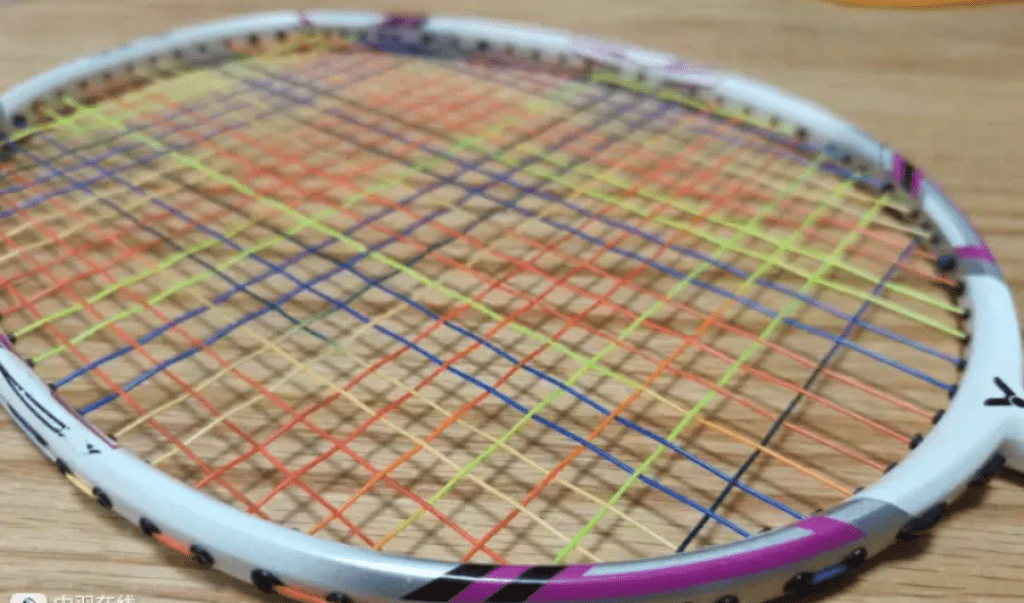The unsellable rackets in hand usually have a few prominent attributes: either poor condition, low brand recognition, or they are low-end. No matter how cheaply you buy them, you’ll always end up at a disadvantage.
However, overcoming a badminton obsession is not easy, and many times, just seeing something that looks appealing can lead to a purchase. This is the case with this mid-range Victor MX series racket.
Upon reflection, several mid-range models ending in 60 might be configured with the same cost-cutting approach as the MX-60.

Parameters: 3UG5, stripped, used condition total weight 89.25g, balance point 300mm, 7.2mm shaft, length 216mm, moderate to low stiffness, eight-sided wind-breaking frame, 80-hole string bed, 9-3 o’clock string groove, warranty 26-28 pounds, string tension 25-27lbs BS720.
I seem to have a weak spot for magenta, and the appearance of the MX-260 is quite appealing. Among the entire series, it’s the only racket with this pinkish hue, leading me to conclude that it might be designed for women. The white paint integrates quite a bit of silver stickers, making it look more delicate, a departure from the rugged image I associate with the MX series. However, the paint and sticker quality are still a bit concerning, especially since the seller didn’t take much care of it, resulting in noticeable damage.

Unlike the clearly low-end MX6000, the MX-260 features a genuine 80-hole string bed. Additionally, the racket head adopts an outer wave design and incorporates nanotec in its materials, making it seem more advanced than an entry-level model, stepping into the mid-range territory.
Actually, apart from the hardness of some rackets, the entire MX series does not exhibit extreme characteristics, whether in entry-level or flagship models. The MX-260 feels quite gentle to handle. Aside from the moderate swing weight and a shaft hardness at least one level lower, it doesn’t have the high-end rigidity found in MX models with special woven carbon fiber.

While this provides a user-friendly handling difficulty, it results in a noticeable reduction in feedback and stability. However, this aligns well with its intended positioning.
In practice, whether warming up with high clears or practicing net shots, the racket performs adequately. Its flexibility is also decent, and with hard strings, it performs well in front court flat drives during doubles. For players with an active net game, it offers a good net advantage.

However, it can only be said that the racket is not difficult to use. I didn’t expect it to have great elasticity, and the MX-260 is indeed unremarkable. Even within the range I can accept, it is on the lower end, making it difficult to experience the benefits of nanotec resin.
When generating power, the MX-260 exhibits a noticeable power loss, more due to the racket face. I previously thought the wave design was to improve ball rebound by leveraging the frame’s elasticity, but it seems more aimed at allowing the use of higher tension strings with lower-grade carbon fiber. The face response is sluggish, and with the shaft not being stiff enough, the ball speed suffers, reducing confidence and desire in attacking.

Additionally, the information in the equipment database is somewhat inconsistent. Although the racket does indeed come in a 3U specification, the “high rigidity carbon fiber” used does not seem to have been experienced throughout the test. If this is due to performance degradation over time, then in some cases, it might not be as suitable as previous low-end MX models.

Leave a Reply